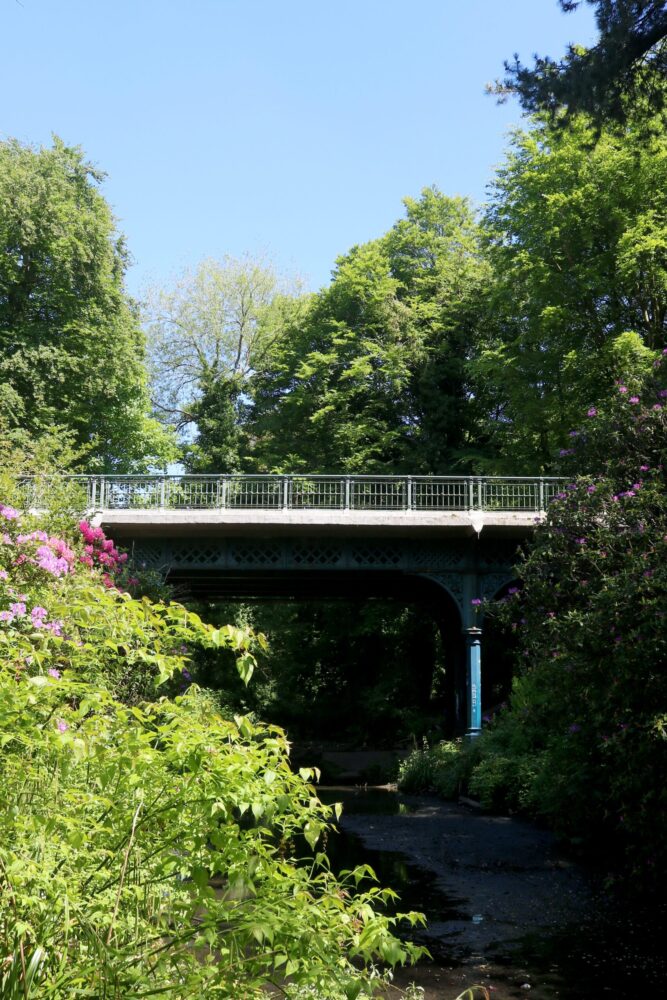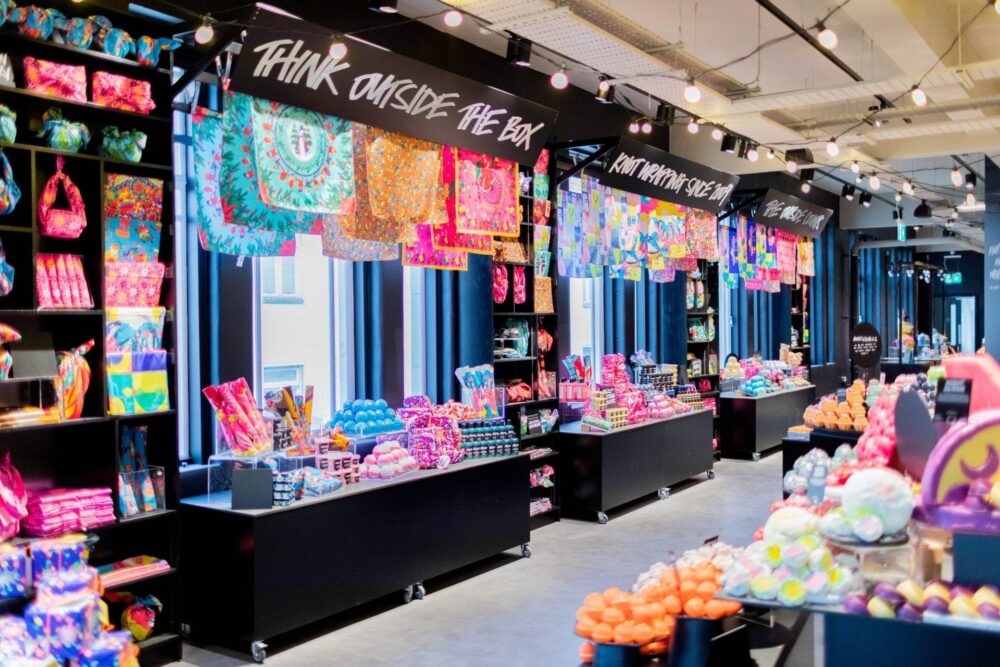
Features
8 reasons why we absolutely love Sefton Park
3 years ago

Sefton Park is nothing short of magnificent. The famous 235 acre park is a favourite amongst Scousers, and is designated by English Heritage as a Grade I in the Register of Historic Parks and Gardens.
There’s so much to see in at Sefton Park. There’s playgrounds for the kids, cafes to stop off for food & drink – and if we’re lucky maybe even an ice cream on a warm day (although it never stops us) – not to mention some of the incredible festivals that take place there like LIMF and Africa Oye.
So what is it about Sefton Park that makes us fall in love with it? Well, to be perfectly honest we could be chatting about it all day, but here’s 8 reasons why we just absolutely LOVE the place!
Caves
One of the most well known grottos in Sefton Park is “Old Nick’s Cave”. Thought to have been built in 1870 by a French rock-work specialist who helped the designers of the park create the landscape. Grottos were popular in parks and public areas in the Victorian era and would often be by water.
Kids will have loads of fun exploring these caves like mini adventurers, and I am sure the “big kid” in us all will have a nostalgic moment of when we were young doing exactly the same thing!
Peter Pan Statue
The bronze statue of Peter Pan by Sir George Frampton has stood in Sefton Park since 1928. Unfortunately it had suffered from the effects of previous restorations, pollution and vandalism. Vandals had taken Peter Pan’s pipes and had cut a squirrel and a fairy’s head off the base of the statue.
In 2001 the sculpture conservation department took the statue to the studio for laser cleaning and repairs. The Victoria and Albert Museum had plaster copies of the missing sections of the statue. Using 3D recording, exact copies of both the fairy head and the pipes were made. A copy of the squirrel was made using more traditional moulding and casting methods. All three pieces were then cast in bronze and reattached to the statue.

In The Palm House in the heart of Sefton Park will be commemorating and celebrating the 90th anniversary of the unveiling of its iconic Peter Pan statue, which was gifted to the children of Liverpool in 1928. When it was first unveiled, the statue was installed overnight and the children were told he had just flown in.
There was a Peter Pan pageant to mark the occasion and the story’s author, James Barrie, famously sent a telegram addressed to ‘Peter Pan, Sefton Park’, telling Peter to ‘behave himself and grow no bigger’.
The Fairy Glen
The Fairy Glen is a series of stunning cascading waterfalls. It is a most tranquil place and was traditionally used in Victorian times by courting couples. Surrounded by beautiful trees, and in the spring it hosts a colourful display of rhododendrons.
Flowing through the Fairy Glen is a water course known as the River Jordon.
The Iron Bridge
In Victorian times this was also a popular meeting point for couples and it was on this bridge that a couple named Oliver and Catherine used to meet, despite being from different backgrounds, and they were deeply in love. One cold Valentine’s night, Oliver told Catherine the devastating news that he was being forced into an arranged marriage by his family but still begged Catherine to meet him on the bridge in 12 months’ time at 11pm.

Catherine reluctantly agreed. A year passed and Oliver stood waiting on the Iron Bridge, but no sign of his love he was just about to leave when he saw Catherine at the far end. His heart leapt with joy and he ran to her with outstretched arms, but to his astonishment she passed right through his body and vanished into the darkness. He discovered Catherine had been struck by the cholera epidemic and had died the previous night, her last dying words being, ‘I must meet my love on the Iron Bridge’. It is said now that every Valentine’s night at exactly 11.15pm, both Oliver and Catherine mysteriously appear and cross the bridge hand in hand.
The Boating Lake
A perfect place to walk your dog, or get your fishing rod and see what you can catch (an angling license is required to do this!). Those old enough to remember will know that you used to be able to rent boats to row out onto the lake, hence the name, although we can’t do that anymore.
The lake was emptied in 2007 and refilled in 2010 following restoration work. It is home to a range of wildlife including fish, geese, and apparently even turtles!
You will always find families on the bank feeding the ducks, and watching the beautiful swans swimming gracefully around the water.
The Palm House
The Grade II three-tier dome conservatory palm house was designed and built by Mackenzie and Moncur of Edinburgh, and opened in 1896. Liverpool millionaire Henry Yates Thompson gifted £10,000 to the city to fund it and it was designed in the tradition of Joseph Paxton’s glass houses and stocked with a rich collection of exotic plants.
During the Liverpool Blitz of May 1941, a bomb fell nearby and shattered the glass. It was reglazed in 1950 at a cost of £6,163 with costs covered by the War Commission.

Decline and deterioration culminated in its closure in the 1980s but, in June, 1992, a public meeting was held calling for its restoration. A petition was presented to the City Council by what had become the “Save the Palm House” campaign and a “sponsor a pane” programme generated over £35,000, leading to the conversion of Save the Palm House into a registered charity (Friends of Sefton Park Palm House).
The Palm House was partially repaired and reopened in 1993, and fully restored – at a cost of £3.5 million with Heritage Lottery and European funding – and reopened in September 2001.
The Eros Fountain
Although it is known as the Eros Fountain, its true title is The Shaftesbury Memorial. It is a memorial to Anthony Ashley Cooper, the Earl of Shaftesbury, who was a social and political reformer.
The fountain, made from bronze and aluminium, was unveiled in 1932 and is a replica of the Shaftesbury Memorial Fountain created by Sir Alfred Gilbert in London’s Piccadilly Circus. It was restored in 2008 with a new aluminium statue replacing the original which was residing in Liverpool’s Conservation Centre before the centre closed to the public.
Bandstand
The Bandstand was always a popular attraction in Victorian parks, always painted in bright colours (the present colour is as it was in the Edwardian period).

The path you’re now standing on was known as “The Monkey Walk” because, in Edwardian times, local men would put on their best ‘monkey’ suits when a band was performing and promenade up and down to get the attention of ladies enjoying the concert.









 Subscribe
Subscribe Follow Us
Follow Us Follow Us
Follow Us Follow Us
Follow Us Follow Us
Follow Us Follow Us
Follow Us











